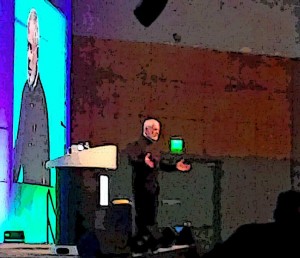 I saw Richard Saul Wurman, author of Information Anxiety and founder of TED, speak at the PCMA conference last week in San Diego. Among various topics, Richard Saul Wurman talked about how there is very little real innovation, defined as completely new ideas that have not existed previously. In fact, Wurman characterized most things that pass for innovation as simple improvements over what is already available. He pointed out that even the automobile wasn’t invented; it was aggregated from multiple other inventions, including the steam engine and a horse-drawn carriage.
I saw Richard Saul Wurman, author of Information Anxiety and founder of TED, speak at the PCMA conference last week in San Diego. Among various topics, Richard Saul Wurman talked about how there is very little real innovation, defined as completely new ideas that have not existed previously. In fact, Wurman characterized most things that pass for innovation as simple improvements over what is already available. He pointed out that even the automobile wasn’t invented; it was aggregated from multiple other inventions, including the steam engine and a horse-drawn carriage.
Richard Saul Wurman identified five strategic thinking perspectives (and examples) typically underpinning new ideas:
- Addition (or Connection) – Putting together already existing products in new ways, with the automobile as the example he shared.
- Subtraction – Taking away elements which conventional wisdom suggests you should have to you create something new. Wurman pointed to the TED conference, where he subtracted a podium, introductions, and long presentations.
- Exaggeration – Taking something to its (comedic) absurd is a valid way to trigger change. Wurman talked about the link between comedy and new ideas, including his enjoyment of comedians Steven Wright and Emo Philips.
- Doing the opposite – Wurman’s book “33” is too complicated to explain in one sentence, but its protagonist succeeds in improving things by doing completely the opposite of what conventional wisdom and social norms suggest.
- Fixing gaps & failures – Wurman talked about how so much information that’s shared doesn’t explain anything. He addressed this with Information Anxiety and a host of books explaining geography, instructions, and medicine, among other topics, in new ways.
Even though I don’t buy his relatively narrow definition of “innovation,” Wurman's construct and examples reminded me of a very familiar exercise learned from Chuck Dymer: Trait Transformation.
One twist?
While we typically use Trait Transformation and multiple transforming attributes to increase randomness in new ideas, Wurman’s approach gets me thinking about using only one transformer to really push a single concept (i.e. subtracting things) for very focused, extreme creativity.
There’s plenty more to report from the conference, including probably another whole post of Richard Saul Wurman one liners. But we’ll save all that for another day - Mike Brown
The Brainzooming Group helps make smart organizations more successful by rapidly expanding their strategic options and creating innovative plans they can efficiently implement. Email us at info@brainzooming.com or call us at 816-509-5320 to learn how we can help you enhance your strategy and implementation efforts.



